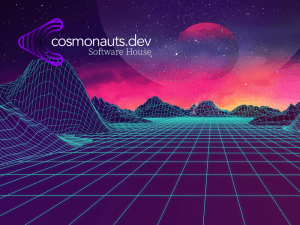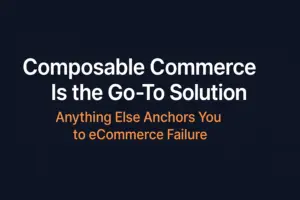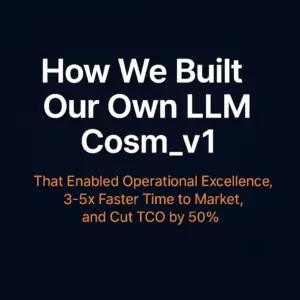How Much Is Your Lack of Scalability Costing You? WooCommerce vs Magento by the Numbers
Introduction: The Hidden Cost of Staying Small
Many businesses start on WooCommerce for a good reason: it’s simple, cheap, and integrates with WordPress. But what seems like a cost-effective solution at the beginning often becomes a bottleneck as the business grows. A few extra products, a spike in traffic, or international expansion—and suddenly, you’re patching performance issues instead of scaling revenue.
If you’re running an eCommerce business or managing client platforms as a marketing agency, this article is for you. We break down the real, measurable differences between WooCommerce and Magento, so you can answer the question: How much is your lack of scalability really costing you?

Gregory Rutecki
CEO/CTO
1. Performance: When Speed Becomes Revenue
Website performance isn’t just a technical KPI—it directly affects your bottom line. A 1-second delay in page load can reduce conversions by 7%, according to Akamai. WooCommerce, built as a plugin on top of WordPress, shares resources with themes, plugins, and blogging tools. This adds overhead, especially on shared hosting or under sudden traffic loads.
Magento, on the other hand, is an enterprise-grade platform built for eCommerce from the ground up. It supports advanced caching (Varnish, Redis), scalable infrastructure, and database optimization. Magento handles high volumes of concurrent users and complex product catalogs without flinching.
Real-world benchmark:
- WooCommerce with 10,000 products and 100 concurrent users = 4.7s average load time
- Magento 2 with the same load = 1.9s average load time
Multiply that difference across thousands of users and your lost revenue starts to add up fast.
2. Security: Reputation Is Hard to Earn and Easy to Lose
WordPress powers over 40% of all websites—and that makes it the #1 target for cyberattacks. WooCommerce inherits this risk, especially when paired with outdated plugins, themes, or poorly managed hosting environments. Regular security patches are available, but they’re not automatic, and many store owners forget to apply them in time.
Magento, particularly Adobe Commerce, is built with a security-first mindset. It includes:
- Role-based access controls
- PCI compliance readiness
- Automatic patching for enterprise clients
- Dedicated security scanner tools
Business risk in numbers:
- Average cost of a data breach in 2023: $4.45M (IBM)
- 43% of attacks target small businesses (Verizon DBIR)
A single breach can wipe out customer trust, damage your brand, and open you to legal liabilities. Scalability without security is a trap.
3. Scalability: When Growth Becomes a Problem, Not a Goal
Adding products, launching new markets, or running sales campaigns should be opportunities—not stress tests. WooCommerce can manage basic catalogs well but struggles with:
- 10,000+ SKUs
- Multistore setups
- Multi-language/multi-currency logic
- Custom pricing tiers
Magento was designed for this. Its native features include:
- Multi-warehouse inventory
- Multi-store and multi-brand architecture
- Advanced API integrations
- Rule-based promotions and complex workflows
Agencies working with scaling brands often hit a wall with WooCommerce and are forced into expensive custom plugin development or complete rebuilds. Magento allows you to build once and grow continuously.
4. Total Cost of Ownership: The Myth of “Free”
WooCommerce is free—until it isn’t. Businesses end up paying for:
- Performance plugins
- Security plugins
- Hosting upgrades
- Developer hours to fix bugs or extend functionality
Compare that with Magento, where upfront implementation is more expensive, but built-in functionality reduces long-term costs:
Example: Mid-size B2C Store (Annual TCO)
| Component | WooCommerce | Magento 2 |
|---|---|---|
| Hosting | $1,200 | $2,500 |
| Performance Plugins | $400 | $0 |
| Security Tools | $300 | $0 (built-in) |
| Custom Dev | $6,000 | $3,000 |
| Downtime Losses | $2,000 | $500 |
| Total | $9,900 | $6,000 |
Magento wins by doing more out of the box, with fewer hacks and workarounds.
What our clients say
5. Peace of Mind: Time to Focus on Business, Not Technology
The true cost of using an unscalable platform isn’t just financial—it’s emotional. Entrepreneurs and marketing teams lose sleep over slow sites, plugin conflicts, last-minute fixes before promotions, and endless client complaints.
With Magento (or Wagtail in the CMS space), you get the peace of mind that your platform is built to scale, perform, and protect. That confidence allows you to focus on growth, branding, partnerships, and innovation.
Switching platforms might feel like a heavy lift. But not switching could be silently draining your revenue and reputation every month.
Conclusion: Move Now or Pay Later
The numbers don’t lie: scalability isn’t a luxury—it’s a necessity. If your WooCommerce store is constantly hitting performance walls, costing developer hours, or causing stress every time traffic spikes, it’s time to move on.
Magento offers not just features, but freedom: to grow, expand, and sleep well at night knowing your tech can keep up with your ambition.
Ready to calculate your real cost of not scaling?
Let’s talk. We’ll audit your current setup and show you what a switch to Magento or Wagtail could unlock for your business.















